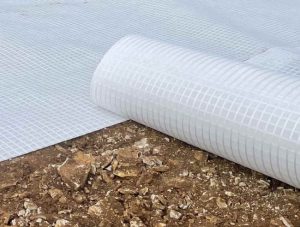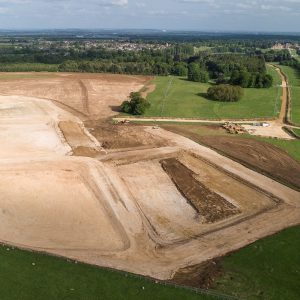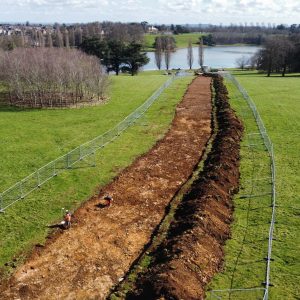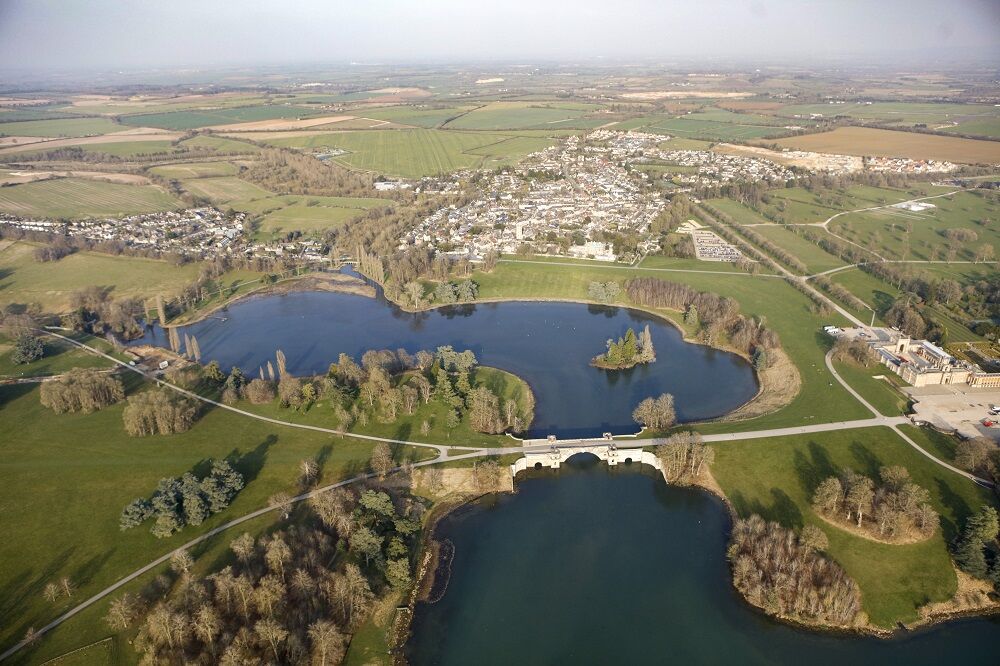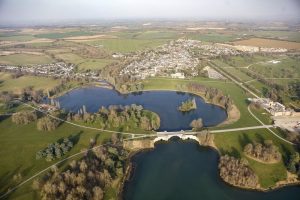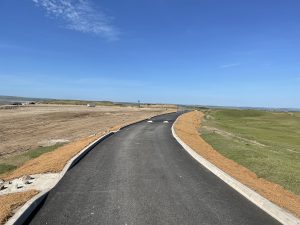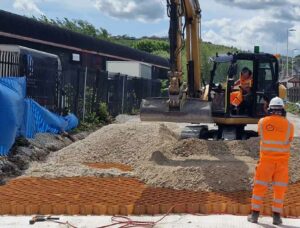SIG Construction Accessories, Ashvale Branch was delighted to supply the Naue Geosynthetics’ Combigrid geotextile that has been used in the construction of a haul road on land at Blenheim Palace. This road is being used to transfer 300,000 tonnes of silt from the lake to an area of grassland beyond.
Blenheim Palace was built between 1705 and 1722, for and by the 1st Duke of Marlborough, John Churchill and, in 1763, the 4th Duke of Marlborough commissioned Sir Capability Brown to re-landscape the Park and gardens.
The Grand Bridge, originally constructed to traverse a wide marshy valley on the approach to the house, now bridges Capability Brown’s 47-hectare water feature, which includes the stretch of water on the northerly side of the bridge known as Queen Pool.
The man-made lake, created by damming the Glyme river, is susceptible to silting and was dredged for the first time in 1840. It was dredged a second time in 1895 but there is no record of it being dredged again since then.
Research, exploration and planning has been ongoing for several years, but work due to have commenced in spring 2020 was postponed for 2 years because of the Covid pandemic.
The Queen Pool at Blenheim Palace is fed by the river Glyme, after it passes through the adjacent village of Woodstock. From Queen Pool the river flows southwest under Vanbrugh’s Grand Bridge and on into the larger Great Lake, discharging into the river Evenlode near Bladon, before finally joining the river Thames a further 6km south.
Blenheim is a UNESCO World Heritage site and Queen Pool is home to some 40 bird species, plus badgers, otters and voles. When first constructed, the lake was around 2m deep, but silt deposited over the past 125 years has now reduced the depth across a wide area of the lake to just 30cm without the restorative dredging, it is estimated that the lake would revert to marshland within a few years so, as well as preserving this iconic view, the dredging project is essential to protect the wildlife dependent on this habitat.
Dredging
The ‘wet’ dredge will be carried out by 3 excavators on pontoons, and 300,000 tonnes of silt will be hauled 1.3km to be spread an area of grassland, away from woodland and any watercourses, and outside the Site of Special Scientific Interest (SSSI).
Naue’s Combigrid® reinforces the basal layer, improves its bearing capacity and stabilises the fill material but, in addition, provides a filtration layer which allows rainwater to drain away, whilst preventing migration of fines from the subgrade into the coarse aggregate layer.
Specialist contractor, Land & Water Ltd, who prepared the engineering design for the project, excavated grassland and laid a base layer of the lightweight Combigrid® geotextile prior to installing a 40cm layer of recycled 6F2 aggregate.
“Using Naue’s Combigrid® has reduced the volume of aggregate required by around 20%”, says L&W project manager, Charlie Oakes; reducing costs of materials and transport, and reducing the depth of excavation required. Using Combigrid® also reduces surface deformation; so less rutting from the continuous movement of heavy loads required on this project Combigrid® is a high strength geogrid of pre-stressed polypropylene or polyester bars, combined with a mechanically bonded filter geotextile. Combigrid® has many applications in environmental protection and is used in many fields of infrastructure and hydraulic engineering.
Charlie Oakes commented: “We have been pleased with the whole process of dealing with Naue, from initial phone call to installation, the interaction has been professional and efficient.”
Combigrid® is manufactured to exacting quality standards, in various grades, on 100m rolls, at 4.75m wide. On-site, it is simply rolled out, with minimal overlaps, and trimmed with standard cutting tools.
